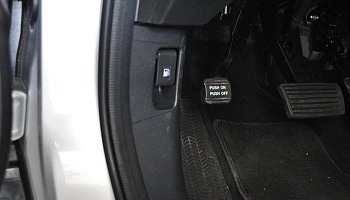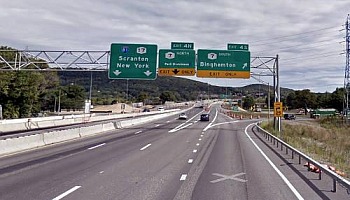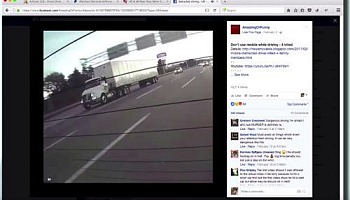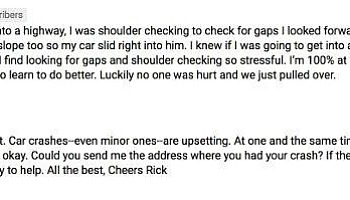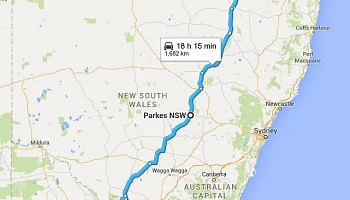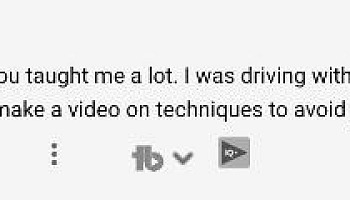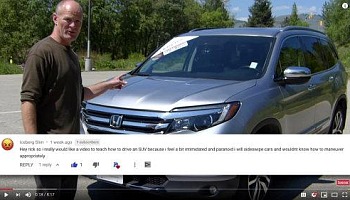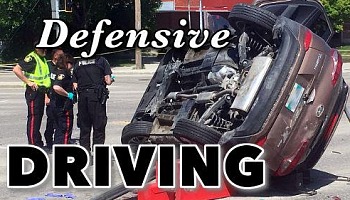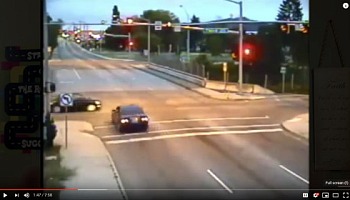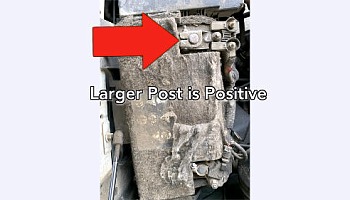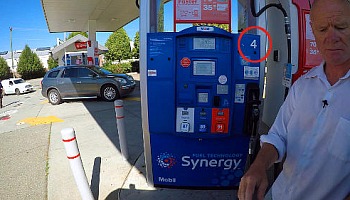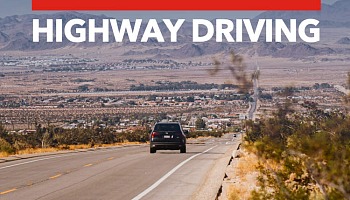If you haven't experienced ABS brakes, try out those on your vehicle.
How to Use Anti-Lock Braking Systems | New Driver Smart
Closed Caption
Introduction
Hi there smart drivers, Rick with Smart Drive Test talking to you today about ABS brakes - anti-lock brakes.
Anti-lock brakes have been around on vehicles for more than a quarter of a century and you should know if your vehicle is indeed equipped with abs brakes.
Actually in this day and age of motor-vehicles, it would be somewhat surprising if you didn't have ABS brakes on your vehicle.
Anti-lock brakes prevent wheel lock up; especially the steer tires in an emergency braking situation.
Essentially what they will do is release the brakes at small regular intervals.
The ABS Light
The way that you know that your vehicle has ABS braces, as you can see here in the image, turn the key to the on position, you'll see the ABS light on the dash and it should go come on momentarily and then go out.
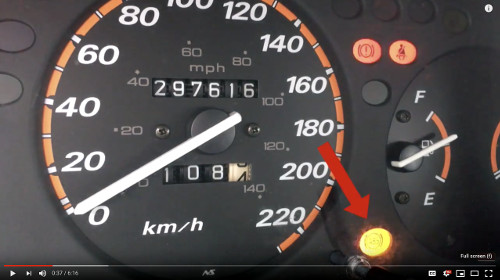
Once it goes up momentarily, that means that the ABS brakes are working normally on your vehicle.
If you haven't experienced ABS brakes before I do strongly suggest you go out someplace and give them a go.
Get the vehicle up to 30 or 40 kilometers an hour 15 or 20 miles an hour for those of you in the United States, and make a very hard hard brake application and hold.
ABS brakes have to be held in the 'ON' position - the very hard 'ON' position.
What Happens When the ABS Engage
Now push back, shutter, noise, feeling like you're launching the Space Shuttle - that's all normal with ABS brakes.
So today we have actually the perfect day for going out and showing you how ABS brakes work ,because we've got a skiff of snow on the roads, which makes them slippery.
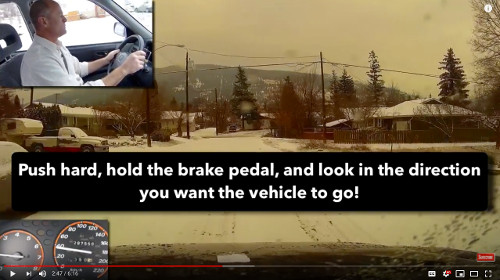
And the ABS brakes will engage much more quickly and are prone to doing that on slippery conditions.
So if you're driving around in the wintertime, you're going to find that your ABS brakes come on a lot faster and engage more quickly than they normally would under on dry conditions - in ideal braking situations.
ABS Will NOT Stop You In A Shorter Distance
So know that, and as well ABS brakes are not going to stop you in a shorter distance, as opposed to conventional brakes.
So know that as well, that in the wintertime, especially, brake early, and creep up to where you want to stop and then come to a complete stop.
So you need to brake early, that way you don't hit ice and snow, and the ABS engages and you go skidding through the intersection.

Okay, so we're going to go out to show you how to use the ABS brakes, and give you some idea of what you can expect in terms of ABS brakes.
So stick around, we'll be right back with that information.
[OPENING CREDITS & MUSIC] Hi there smart drivers, welcome back - talking today about ABS brakes and you can see that we have a bit of snow on the road here, which makes it perfect for us to demonstrate to you how to use ABS brakes.
Push Back, Grinding, & Shutter Are Normal
And you can hear the noise and the shutter and that is the ABS brakes engaging...
This is one of the fun lessons that I give to new students who are learning how to drive.
And actually, I often do this right at the beginning so they have a good idea how to brake aggressively.
Here's another one [GRINDING NOISE OF ABS BRAKS ENGAGING] The vehicle will come to a stop.
And you can hear that grinding noise and you can feel the vehicle pulsating.
You can see it shaking in the cameras.
That is all normal for ABS brakes.
ABS on Snow & Ice
And if you're not familiar with ABS brakes and that happens - the first time that you're on snow or ice, you might find it a bit disconcerting and wonder what's going on.
But actually ,it's all normal.

So just know that that is going to be the ABS brakes.
We're going to do it one more time here.
And actually you might find yourself having to post off the steering wheel to get the ABS brakes to engage - so that you can hold the brake pedal on to full capacity and actually get the ABS brakes to engage.
There we go - that is a good demonstration of ABS brakes for you.
Lots of fun!
Review of ABS Brakes
Quick review of ABS brakes - go out and try them.
If you haven't had them activate on you before, go out and try them - especially if you've got a skiff of skip snow on the road and whatnot.
They're going to engage much more quickly than if you're on dry pavement.
If you're on dry pavement, you're going to work pretty hard to get them to engage.
And know that pushback, shutter, noise - all of that is normal for ABS brakes.
If you don't know you have ABS brakes on your vehicle, turn the key to the 'ON' position - the ABS light should come on momentarily and then go out.
That means that they're working normally.
If you don't find the light on your dash, have a look in your owners' manual - that too will tell you.
If all else fails, Google could probably find that information for you as well.
ABS brakes - they don't stop you in a shorter distance than standard brakes, so know that.
And as well if you're on slippery conditions, it's probably going to be a little bit farther because they activate much more quickly and your brakes are actually releasing and applying.

So stop back from where you actually want to stop--not stop, but actually slowed right down to a crawl--and then creep up to where you actually want to stop.
Question for my smart drivers:
Do you know whether you have ABS on your vehicle or not.
Leave a comment down in the comment section there, all that helps out the new drivers learning how to drive.
I'm Rick with Smart Drive Test - thanks very much for watching.
If you like what you see here share, subscribe, leave a comment down in the comment section.
As well hit that thumbs up button.
Check out all the videos here on the channel if you're working towards getting your license or starting a career as a truck or bus driver - lots of great information.
Head over to my website - good information over there as well.
Stick around to the end of the video - funny bits and links to the other videos and to my website.
Thanks again for watching.
Good luck on your road test.
And remember, pick the best answer not necessarily the right answer.
Have a great day.
Bye now.
Blooper
But it's still pretty slick.
I'm sure it's going to be interesting for the first day of driving - people getting used to driving in the snow again.

